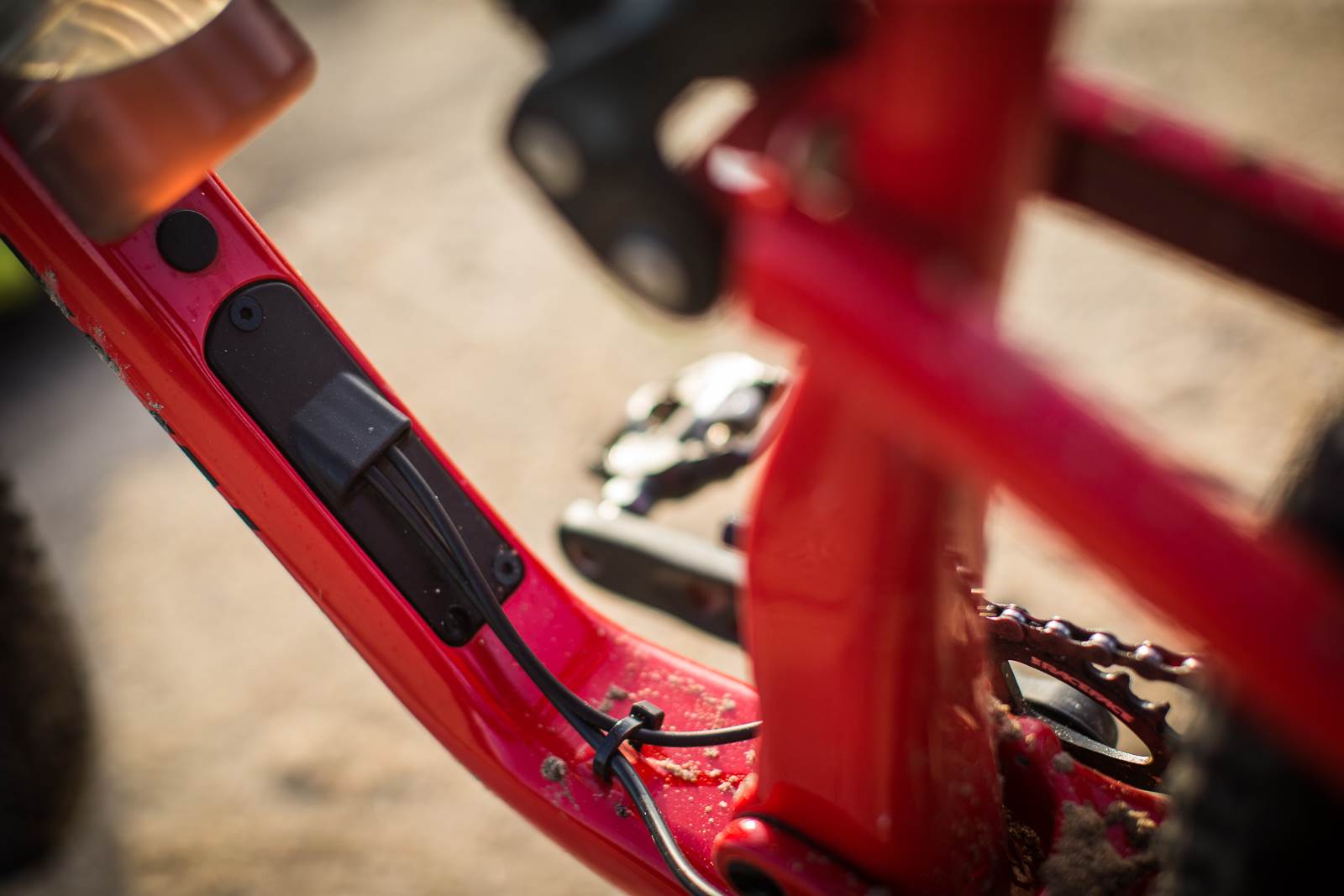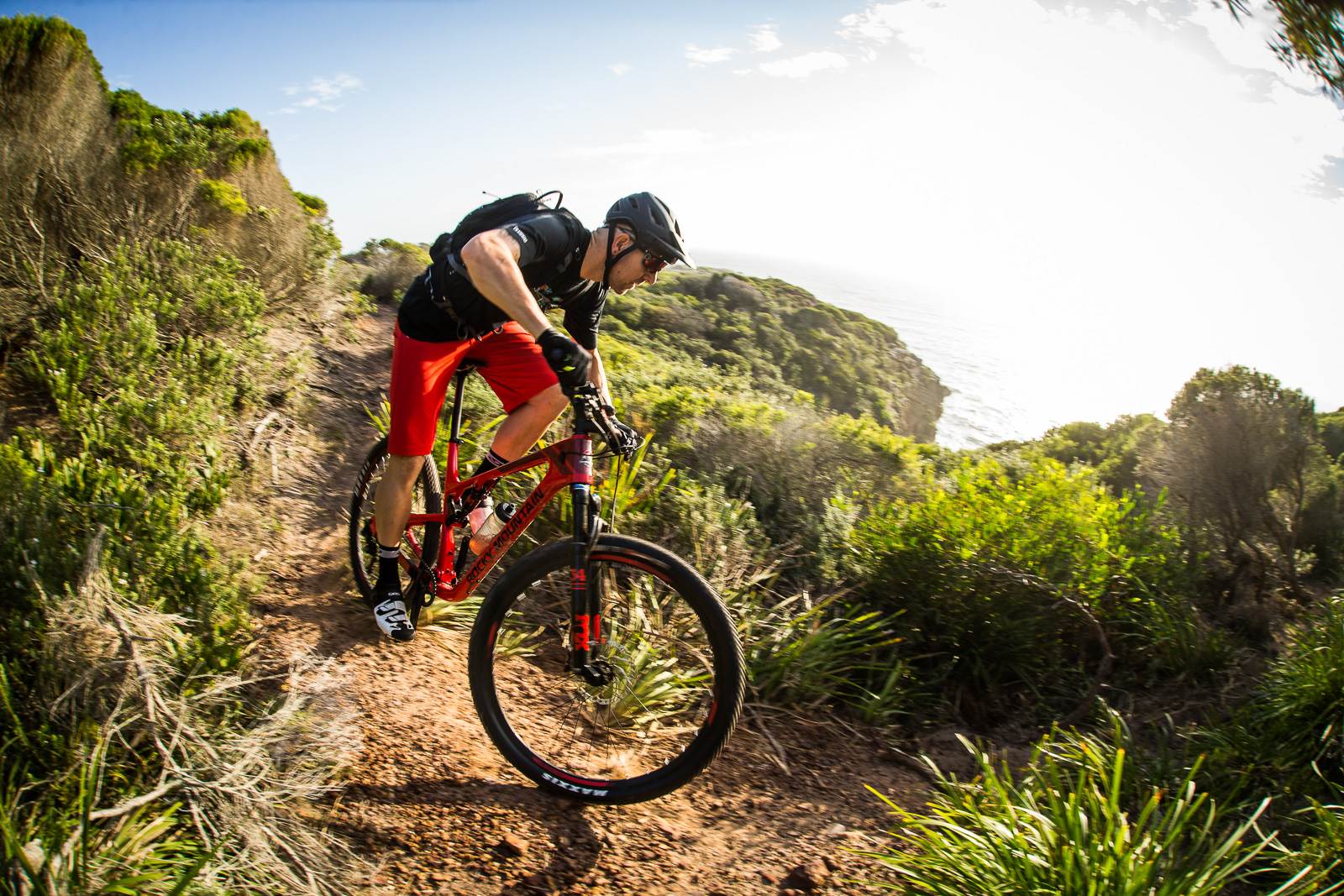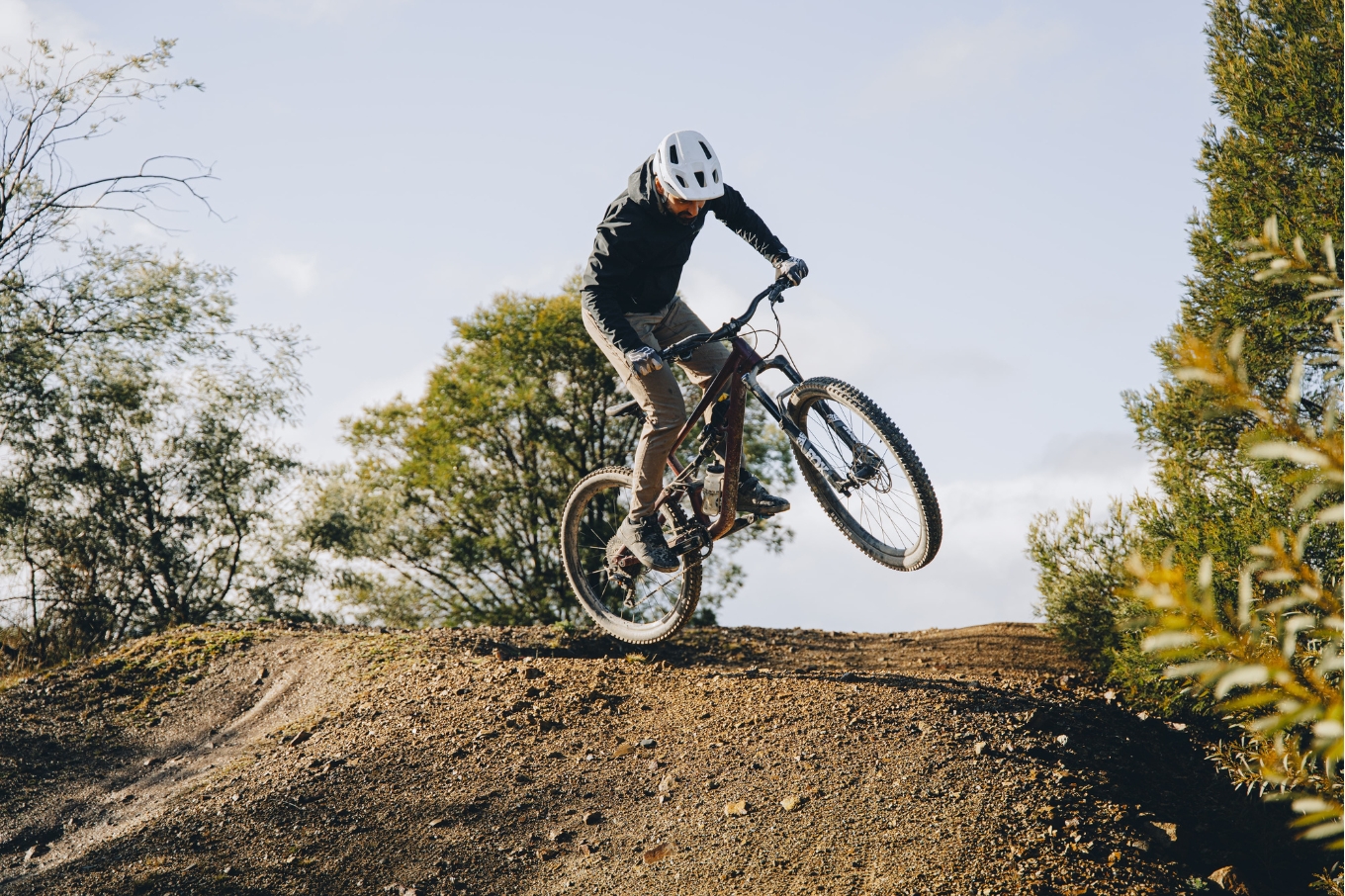TESTED: Rocky Mountain Element 950 RSL
Chris Herron hits the trails with the Rocky Mountain Element 950 RSL and returns with results.
Words: Chris Herron Photos: Tim Bardsley-Smith
Upon hearing I would be testing the new Rocky Mountain XC bike I was genuinely excited. Although Rocky Mountain first appeared back in 1987, it wasn’t until 1997 that I got my first taste of them after seeing the ‘Team Only’ Element and Altitude in-store whilst living in Western Canada. With roots steeped in Canadian XC and ‘freeriding’, Rocky Mountain have always had a solid reputation as being a burly, hard-hitting bike for tackling the steeps of their hometown in North Vancouver. The RM7 and Slayer were always the iconic models I lusted over while huddling around the TV watching VCR movies such as the New World Disorder and Kranked series – often overshadowing their XC models that were lining up at the Grundig World Cups XC series.
INITIAL IMPRESSIONS
The Element is marketed as Rocky Mountain’s premier dual suspension XC and marathon race bike. The updated model for 2017 has 29” wheels, 100mm rear suspension and 120mm up front – it seems that these are the magic numbers for the modern XC bike that is capable of slaying the local trails as well as lining up for your next 100km race. Just wander into your local MTB shop and you will see a surplus of brands catering to this style of bike. Some brands do it well, whilst others not so much. The Element sits up near the top alongside models from Trek, Specialized, Giant, Pivot and Yeti. It’s certainly a real battle to produce the perfect ‘do-it-all’ bike for riders who don’t like to ride the really aggressive and technical trails.


Unboxing the bike for the first time to tackle the build, I was super impressed with initial aesthetics of the frame. Large oversize tubing, internal cabling, full carbon frame/swingarm and a rich paintjob all make for a sharp looking bike. Delving closer into the construction of the frame, it was a pleasure to see the internal carbon walls to be smooth and dag free. This is common amongst high end carbon frames – Rocky Mountain call it SmoothWall.
Internal cable routing was relatively easy to set up, especially with the help of the Park Internal Cable Kit. There are no internal guides or ‘tubes’ to deliver the cable to the other end so a runner must be used, which is pretty standard these days on most internally routed frames. The rear derailleur and rear brake line both run along the outside of the chainstays so cable tie are used here, pretty simple and neat.
The rest of the build was straightforward and setting up suspension and tyre pressure was the only personal settings I made to the bike. However, I did make the tyres tubeless for the first non-carpark test after flatting the Maxxis Ikon rolling over some small rock features before even getting out on the trails.
The all-important weight check with the Park Tools Dream Crusher found the 950SL to come in at 11.95kgs without pedals. That’s a great weight for a bike that is actually the second lowest model of the five bikes in the range – and in XL as well.
One key feature to note whilst setting up the Element is the new patented Ride-9 Suspension System. Whilst some bikes have a ‘high’ and ‘low’ setting to adjust bottom bracket height and head angle, the Ride-9 system has a keyed rearward shock mount to allow nine different positions. After referring to the website regarding setup, I chose Position 4 to match my personal style of riding. It was said to be a mix of ‘heavy’ and ‘aggressive’, allowing a lower air pressure for better small bump compliance and increasing my usable damping range. It would also provide a forward position for a slacker and more progressive rear suspension rate. Only out on the trail would I know if it worked or not, so that was the next order of business.

ON THE TRAIL
I had small concerns regarding the stiffness of the rear end due to the pivot in the rear triangle, but I speculated that the large sections of carbon tubing in the chain/seatstays would help eliminate any flex or unwanted loss of power to the rear wheel. Only time would tell.
Coming off my personal bike that has a stack and reach similar to the Element, I felt at home quite quickly. And with an identical chain stay length, the ability to wheelie and pop manuals was just as easy. A little longer than normal stem did make the front end slightly longer than what I am used to, but that could easily be swapped out for a 20mm shorter stem for the more technical trails.
I gave the bike a few good sessions on varying terrain, just to give me the best chance to test out the how well the Element performs in its XC duties, as well as on more aggressive trails with steep roll ins and drops. Not to my surprise, the bike’s handling was very predictable and stable, both on climbs and descents.
As it is touted as an XC bike, I thought a few technical, steep climbs would give me a chance to feel how stiff it feels under direct power – as well as the ability to keep the rear wheel planted for maximum traction. Well, there are big ticks on both of those, as the climbs were tackled with ease and the rear wheel was planted. I did use the remote lockout a few times just to see how well the bike handled climbs with the rear end stiffened up, but settled largely on the middle position as my choice for aggressive climbs. A head tube angle of 69 degrees only favoured the climbs with the ‘not too steep, not too slack’ approach to the geometry. The Shimano 1x drivetrain with 11-46 cassette was also handy when the climbs hit over 20 per cent. With a lowest gear of 32/46, there is not much the bike can’t climb, and when I couldn’t, it was usually my ability that let me down.
Once the top of the climbs was reached, it was onto the descents to test how well the Element’s trail-inspired XC geometry was going to perform. Being used to having a dropper post on every bike I own, I was a little hesitant hitting my usual lines on an unfamiliar bike without one. But even with a saddle height over 815mm, I felt quite confident on the steep roll ins and smallish drops. I assume the slacker than normal XC bike and 120mm fork with 34mm legs, coupled with the ability to adjust the rear shock mount, was a huge bonus in making me feel confident in the steep, technical stuff and higher speed descents.


On the rest of the trails with their tight and twisty single track and undulating rocky shelf paths, the Element felt very smooth and capable. Having ridden 29” wheels for over 12 years, I have always found them an advantage while riding these type of trails. Even though the wheels are not the stiffest on the market, even with the Boost hubs, the frame surely made up for keeping the bike on the straight and narrow. The front wheel tracked true in the rough stuff as well as in corners. There is very little flex coming from the front end and that gave me confidence to push a little harder over the rocky sections.
On the longer rides, the ability to install two water bottle cages to the frame is a nice touch, something that most XC/trail bikes are omitting from their dual suspension frame sets.
ON REFLECTION
There are not a lot of negative features to the Rocky and its build, but I must admit I was not overly impressed with the handling in the wet stuff. Testing week was in one of the wettest around, and had quite a few sketchy moments. A lot of it had to do with the tyre choice and high riding position. I know it’s an XC bike, but unless you are racing at the pointy end, the Maxxis Ikons aren’t a great trail tyre by any stretch. Once they filled up with a bit of mud, they were pretty slick and unpredictable. A slightly more aggressive tread could have made the rides a lot more fun and fast. Nit picking, I know, but when bikes these days are all pretty good, sometimes the smallest component change makes a huge difference.
I was planning on taking the Element to race the ‘Willo’ down at Wingello, but unfortunately I didn’t get a chance to go. However, I think it would have been a perfect choice to roll around with for over two hours. It’s the type of bike that would be able to be ridden day after day in some of Australia’s iconic stage races, and then chuck in a dropper and take it to the likes of Blue Derby or Rotorua for some wicked trail riding.

I really think that those riders who are after a light, stiff and trail capable dual suspension XC bike with a great mix of light and durable components will find the 950SL a lot of fun to ride and, no doubt, a weapon to race. For the money, it is very well specced and compares well to a lot of other bikes in the same category, which as mentioned before is one stacked full of top quality machines.
For the crew who are after something with a little more travel and confidence on the bigger descents, they should probably look more towards the Rocky Mountain Instinct 29 and Altitude 27.5. The Element may be able to handle the lighter side of Enduro riding, but definitely has its limitations compared to its bigger brothers.
| BRAND | Rocky Mountain |
| MODEL | 2017 Element 950 RSL |
| RRP | $5999 |
| WEIGHT | 11.95kg (as tested) |
| FROM | adventurebrands.com.au |






